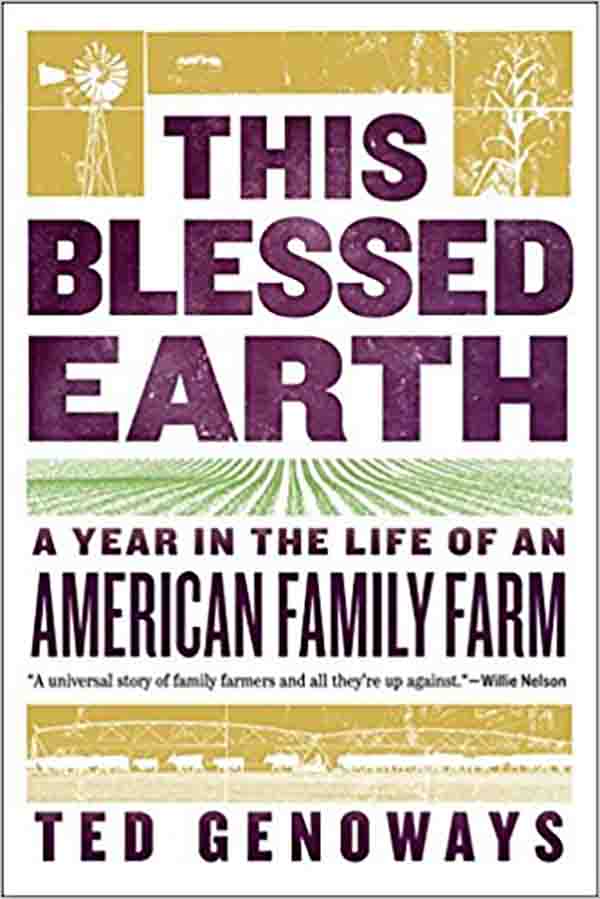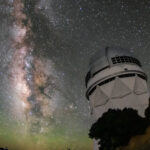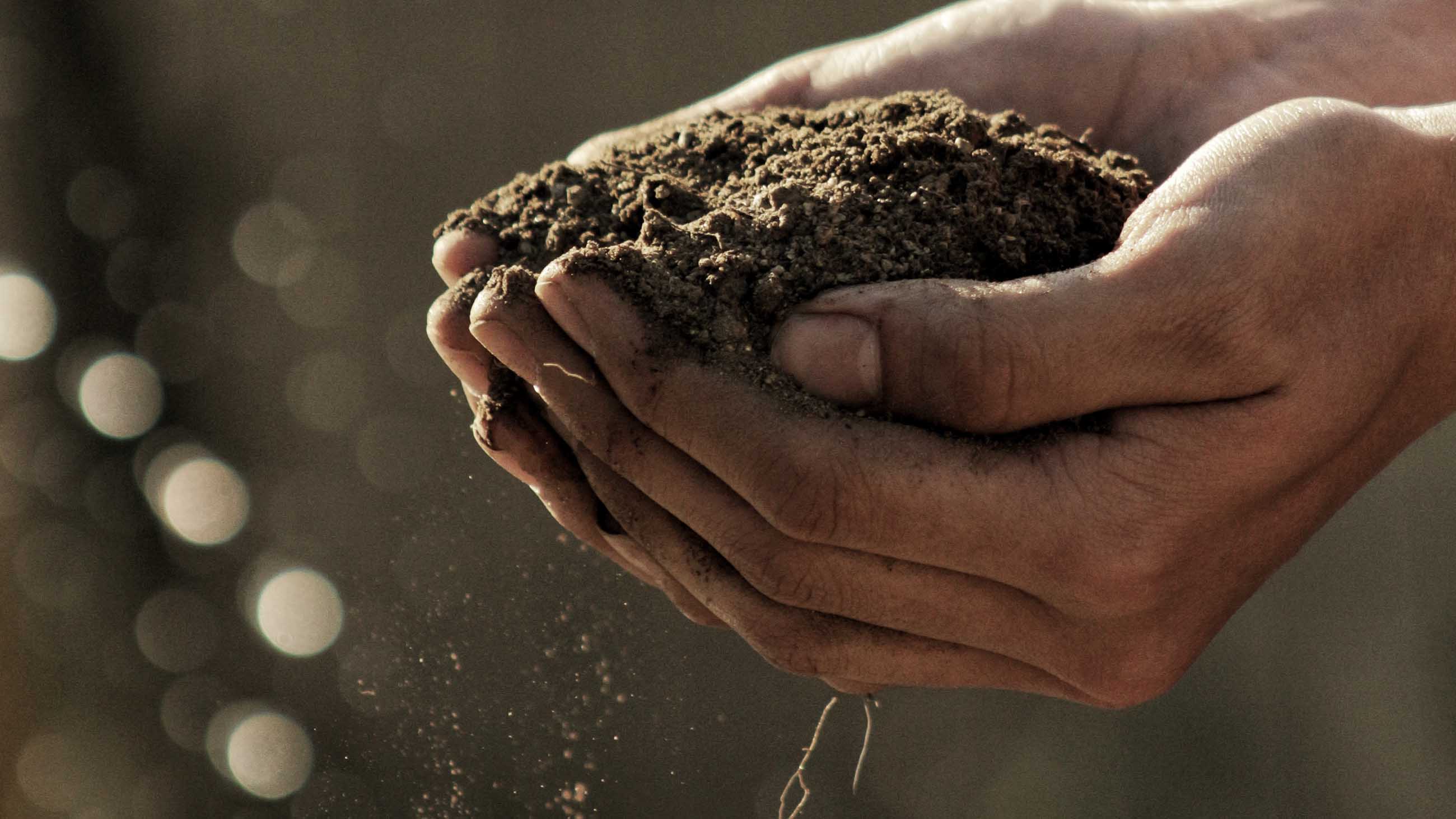On July 4, 1886, Theodore Roosevelt spoke at an Independence Day celebration in Dickinson, Dakota Territory. “It is not what we have that will make us a great nation,” the future president told the crowd. “It is the way in which we use it.”

BOOK REVIEW — “. “This Blessed Earth: A Year in the Life of an American Family Farm,” by Ted Genoways (W.W. Norton, 240 pages).
This question of stewardship is central to the American experiment. Simply defining the terms is a persistent struggle. For Roosevelt, “we” referred to white, European immigrants, and “what we have” was a function of what was taken — violently, deceptively — from those who had lived on the land for millennia. Today, the questions of who “we” are, what we have, how we got it, and how we use it undergird a high-stakes national identity crisis. Just check Twitter.
A new book by the journalist and author Ted Genoways is the latest attempt to understand what we have and how we use it. “This Blessed Earth: A Year in the Life of an American Family Farm” is ostensibly just that — a harvest-to-harvest portrait of a Nebraska farm family. But by peering distantly into the past and outwardly across the nation, Genoways delivers a comprehensive, contemporary portrait of how Americans have shaped the land, and, in turn, how the land has shaped Americans.
“This Blessed Earth” serves as a cautionary tale, too. Genoways finds fearful symmetries between history’s ecological missteps and today’s climatic shortsightedness. We think of the Dust Bowl as a natural disaster hermetically sealed in another time; Genoways reminds us that the same human folly that turned the prairie into desert persists in today’s water mismanagement and greenhouse-gas emissions.
“To understand,” he writes, “first remember.”
We meet Rick Hammond, who raises corn, soybeans, and cattle on a piece of Nebraska land that has been in his wife’s family off and on since her great-great-grandfather Thomas Barber homesteaded on it in 1874. After four decades of hard labor, hard decisions, and at least one near-death experience, Rick is preparing to hand the operation over to the next generation, including his daughter, Meghan, and her future husband, Kyle Galloway.
The future for this family farm — as it is for the family farm — is uncertain, just as it has always been. Like many of those who worked the land before her, Meghan has gone away from the farm, only to ultimately return. Despite her youth, she has already endured immense personal tragedy. She and Kyle demonstrate profound resilience, but they will take over the farm as commodities prices sag, fickle consumers impose stringent demands on food suppliers, and a changing climate threatens to alter the landscape — this time permanently.
Shaky intergenerational transfer on a family farm, as Genoways illustrates, is as pervasive as the smell of manure. This particular family almost lost it all when Barber, after years of hardship, sold the land in 1915 and shipped off to California. But a generation later, his grandson Wayne gambled a successful business empire to buy it all back, “mostly out of sentiment for the old place,” his wife would remember, and, perhaps, because of pressure from his mother to regain what her father had lost decades before.
In other words, land is more than just land. For farm families, it is an heirloom, the tie that binds descendants to long-lost ancestors. And tending to the land isn’t as simple as throwing seeds in the ground and waiting. Genoways embeds with Rick, Meghan, and Kyle, showing through their everyday lives the myriad complexities and seemingly impossible decisions that pervade farm life. If all “This Blessed Earth” does is disenthrall us of any notion that farming is an uncomplicated, unintellectual, easy existence, then the book will have succeeded.
“Failure is everywhere on the farm,” Genoways writes, and, later: “Failure’s best hiding place [is] smack in the middle of success.” This is as true for farming writ large as it is for any one individual farm. With every new technological advance — be it the tractor, center-pivot irrigation, chemical fertilizer, or GMOs — there is a period of rapid growth and optimism, almost invariably followed by overextension, overleveraging, and an overreliance on the very tools that promised permanent success.
Policy, too, can be the trigger that sets off this success/failure paradox. The 2005 Renewable Fuel Standard, which required that billions of gallons of biofuels be blended into the nation’s transportation fuels, had noble intentions — to lower greenhouse-gas emissions, reduce reliance on foreign fuels, and jump-start rural economies. Corn and soybean prices skyrocketed in response, and for a while farmers reaped the rewards of an ethanol gold rush. But as Genoways notes, they also invested millions in new equipment and land to keep up with rising demand. When prices eventually self-corrected, farmers were left with tremendous debt that cheap corn could not repay. Equally troubling, though less documented in “This Blessed Earth,” is how the ethanol boom has helped dramatically alter American grasslands, an ecosystem vital to pollination, long-term soil fertility, and cultural history.
What really keeps Rick Hammond up at night, though, is water. The Ogallala aquifer, which supplies groundwater for crop irrigation in eight states across the Great Plains, is being depleted at a rate that alarms many who study it. Its decline is expected to accelerate as rising global temperatures increasingly bake the moisture out of America’s breadbasket. Farmers have endured bad droughts before, and there are hopeful efforts to make farming more water-efficient. But Hammond raises the awful specter of a 50- or 100-year drought — a “permanent dust bowl,” as Genoways puts it.
“I have seen nature repair itself, but it takes time,” Hammond tells Genoways, “If humans don’t give it a chance, we’ll end up stressing the resource, and I think it could be bad.”
Some readers will find “This Blessed Earth” tough going. There is a fair amount of discussion of farm equipment, fertilizers and seeds — subjects that may feel distant to those of us with limited exposure to farming. There is a lengthy section toward the end about irrigation technology. It is important stuff, but some readers will yawn their way through what is ultimately a history of ditch-digging in flyover country.
That’s too bad. Now more than ever, it’s critical for hyper-stimulated urbanites to engage with the elemental otherworld in between New York and L.A. The strength of Genoways’ book is in the nuance, context, and humanity it brings to buzzwords we think we understand — GMOs, organic food, corporate farms, biofuels, chemical fertilizers, the Keystone XL pipeline, and so on.
Donald Trump’s ascension to the presidency set a rush of liberal city-dwellers scrambling to understand a Middle America they could not recognize as their own. J.D. Vance’s “Hillbilly Elegy” became a must-read, and national newspapers pledged to send more reporters into the sprawling, more rectangular states. “This Blessed Earth” isn’t particularly political — and the Hammonds defy stereotypical red-state politics — but that’s what makes the book a vital addition to the library of rural-urban compassion. In attempting to bridge this divide, there is always the danger of otherizing. Genoways, himself a self-professed “city kid” with his own family ties to farming, is instead careful to just humanize.
We city kids go to farmers’ markets, buy local food, and feel good about ourselves for doing it, but do we really know a thing about what it takes to get that grass-fed, organic, antibiotic-free beef from farm to fork? “This Blessed Earth” brings us closer to knowing the complexity, tragedy, ugliness, and beauty of the Americans who use land to feed us.
David J. Unger is a Chicago-based writer and reporter who has written for Undark, InsideClimate News, The Atlantic, and other publications. He was the energy editor at The Christian Science Monitor.










